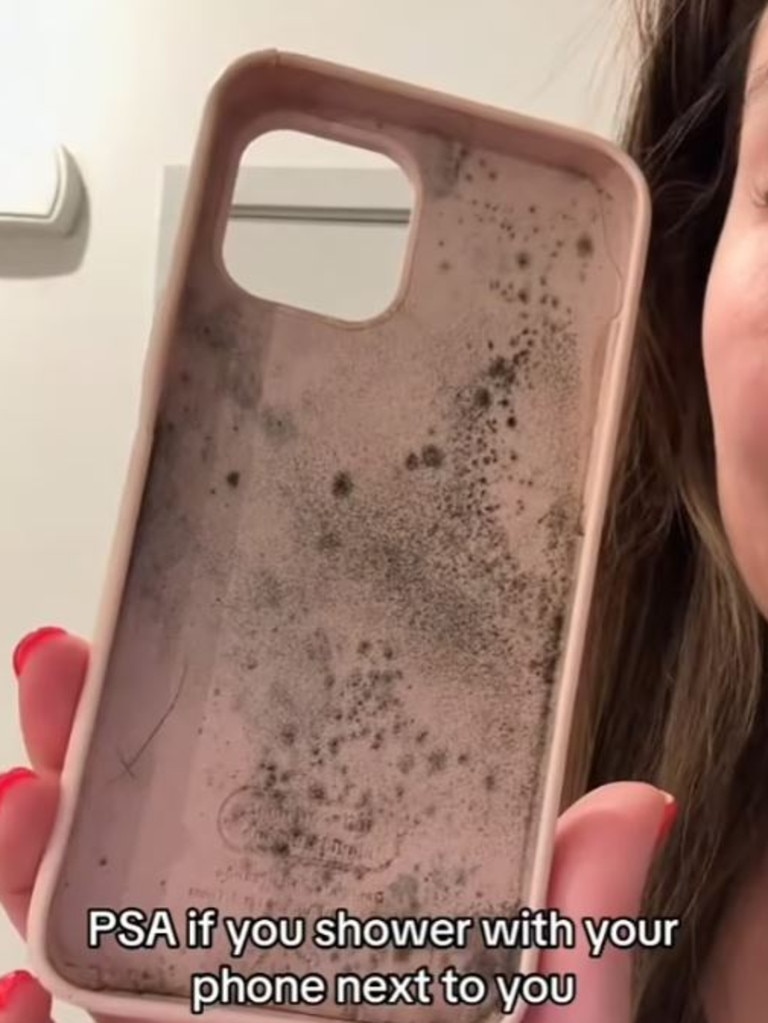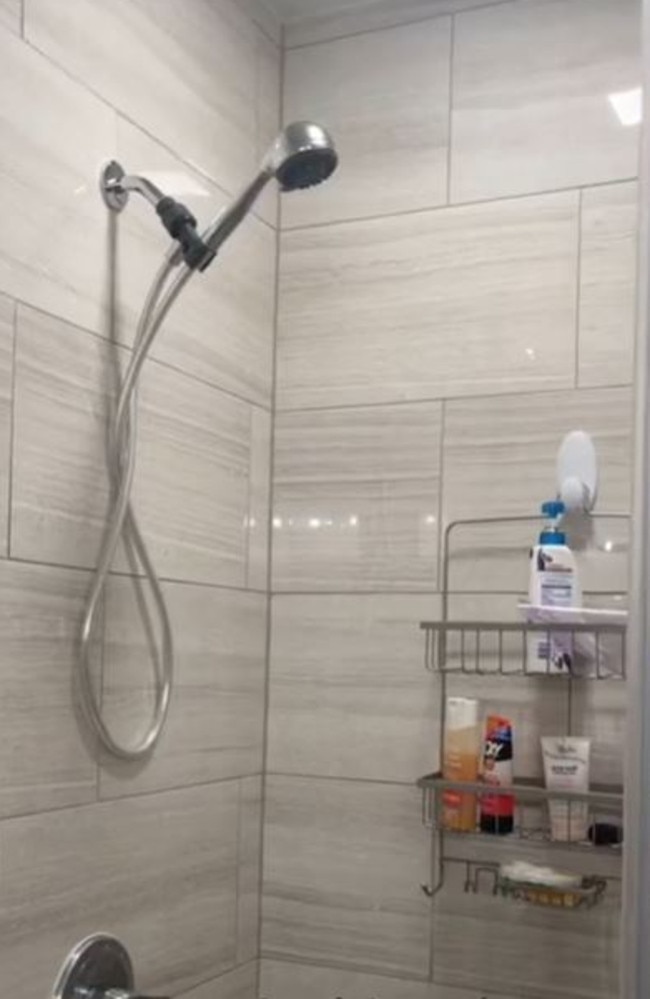Warning over common shower habit that is not only filthy – but also dangerous
There are warnings over an increasingly common act that occurs in the bathroom as it is not only filthy, but also dangerous too.
A warning has been issued to smartphone owners who use their expensive devices while showering.
While bringing costly electronics into a place known for having an abundance of water might not seem like a great idea, the advancement of technology over the years has seen devices have become increasingly more “water-repellent” – and seemingly the allure of watching TikTok while washing is now proving too much to resist.
Despite the invention of “showerproof” wallmounts and modern watertight manufacturing, our beloved smartphones are still far from waterproof.
One woman named Andi found this out the hard way after removing her iPhone case and making an unexpected discovery underneath that has prompted her to issue a “PSA” for smartphone holders.
“I usually take this phone for the shower to listen to music while I’m taking a shower,” Andi, who posts under the handle @bestfindsbestie, said in a viral clip.
She then held up her pastel pink silicone phone case, revealing that the inside was speckled with black mould.
“Yeah, yeah,” she concluded, before the video – which has been viewed almost 240,000 times.
Mould is part of a group of very common organisms called fungi that also include mushrooms and yeast. It is present virtually everywhere, both indoors and outdoors and “can grow on virtually any substance”.
While mould often it proves harmless, it can pose serious and potentially dangerous health risks, NSW Health warns.


Black mould, which seemed to be in Andi’s case, is also known in Australia as toxic mould and refers specifically to a type of fungi called Stachybotrys chartarum.
It “commonly appears in damp or water-damaged areas” and can cause a fungal infection and worsen asthma symptoms on those who are exposed.
To prevent mould from growing, control moisture levels, prevent condensation, and clean and properly dry your phone’s surface.
Apple states users should clean their iPhone immediately if it comes into contact with anything that might cause stains or water damage — for example, dirt or sand, ink, make-up, soap, detergent, acids or acidic foods, or lotions.
The exterior of iPhones should be wiped down with a 70 per cent isopropyl alcohol wipe, 75 per cent ethyl alcohol wipe regularly — but avoid getting moisture in openings.
Products containing bleach or hydrogen peroxide should not be used on its devices.
Many users were quick to share their shock at the inside of Andi’s phone case, labelling the mould discovery “nasty”.
“This just happened to mine too, same kind of case,” one shared.
“Oh my God not me discovering the exact same thing two days ago,” someone else added.
As one chipped in: “Checking mine immediately.”

Others however suggested the $US15 case ($A25), bought from a third-party retailer could be the issue, and recommended buying only official Apple products.
Some commenters thought the woman’s bathroom could be the issue.
“I think your bathroom may have some ventilation issues you should get checked out,” one suggested.
“If y'all aren’t cleaning your phone cases I think you’re nasty af like your phone touches everything and then touches your face of course you should wash it.”
More Coverage
Data from online optical retailer clearly.com.au showed that 40 per cent of Aussies in 2019 were using their phones in the bathroom.
It’s likely this number has increased since then, with recent stats showing 50 per cent of British people are guilty of the poor hygiene habit.
Considering studies have found our mobile phones are often dirtier that toilet seats, experts have recommended we ditch bringing them into bathrooms altogether.






